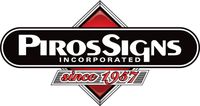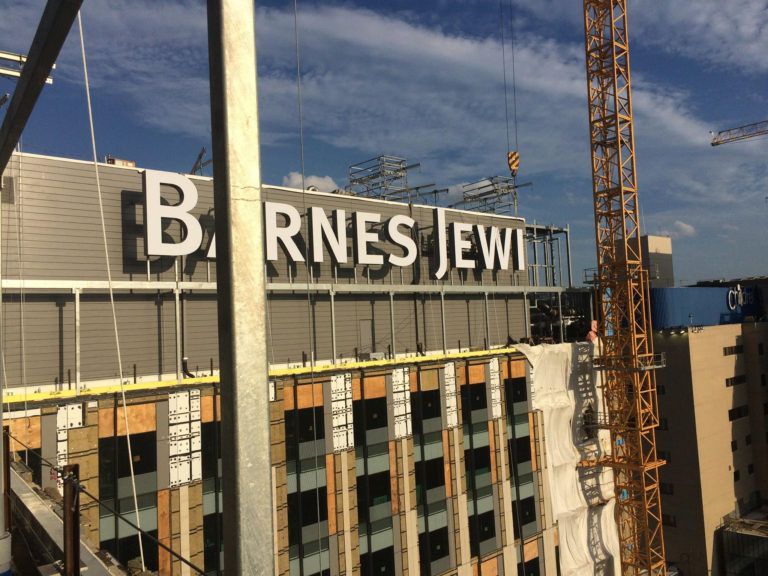Commercial signs are an essential aspect of a business’s branding and marketing strategy, playing a significant role in shaping customer perception, enhancing visibility, and driving engagement. From storefront signage to digital displays, each type of commercial sign serves a unique purpose and addresses specific business needs. In this article, we will take a deep dive into the various types of commercial signs and their functions, helping businesses understand how to choose the right signage for their goals.
1. Exterior Signs
Exterior signs are often the first impression customers have of a business. These signs are designed to attract attention, provide visibility, and convey the brand’s identity to passersby. Here are the most common types of exterior signs and their functions:
- Storefront Signs: Storefront signs are mounted directly on the front facade of a building and are often the most prominent visual element for a business. These signs typically include the business name, logo, and sometimes a tagline or slogan. Their main objective is to solidify brand recognition and attract foot traffic. Whether illuminated or non-illuminated, a well-designed storefront sign instantly communicates what the business offers and draws attention from passersby.
- Monument Signs: Monument signs are free-standing structures positioned near roadways or entrances to guide customers to the business location. Constructed from durable materials like brick, stone, or metal, these signs project a professional and established image. They are particularly effective for businesses situated on large properties or set back from the main road, as they provide a clear, low-profile marker that aligns with the surrounding landscape.
- Pylon Signs: Pylon signs are similar to monument signs but are elevated on tall poles, making them visible from greater distances. These signs are ideal for businesses located near highways or busy intersections, as their height ensures they stand out in areas with heavy vehicular traffic. Shopping centers, gas stations, and large retail chains commonly use pylon signs to display their names or multiple tenant businesses in a single structure.
- Awnings: Awnings serve a dual purpose, combining functionality with branding. These canopy-like structures provide shade and protection from weather while prominently displaying the business’s name, logo, or tagline. Awnings enhance the overall aesthetic of the storefront and create a welcoming entrance for customers.
- Window Graphics: Window graphics utilize the often-unused space on storefront windows to create an eye-catching display. These visuals can advertise products, services, or current promotions in a vibrant and creative way. Window graphics are a cost-effective way to make the storefront more engaging and dynamic while communicating essential messages to potential customers.
Function: Exterior signs enhance a business’s visibility and create a memorable brand presence. They serve as both marketing tools and navigational aids, guiding customers to the business while reinforcing brand identity.
2. Interior Signs
Interior signs are critical for improving the customer experience and ensuring smooth navigation within a business space. These signs are functional and aesthetic, designed to complement the interior design while conveying important information.
- Wayfinding Signs: Help customers navigate large or complex spaces, such as malls, hospitals, or office buildings. Examples include directional arrows and floor directories.
- Menu Boards: Common in restaurants, these signs showcase food and drink options in an organized and visually appealing manner.
- Promotional Displays: Used to highlight special offers, featured products, or seasonal promotions within a store.
- Wall Murals: Decorative signs that enhance the ambiance while reinforcing brand identity through creative designs and messaging.
- Safety Signs: Inform customers and employees about safety protocols, such as emergency exits, fire hazards, or restricted areas.
Function: Interior signs enhance the customer journey by providing guidance, promoting products, and ensuring safety.
3. Digital Signs
Digital signs are transforming the way businesses communicate with their audiences, offering a modern, dynamic, and highly adaptable alternative to traditional signage. Leveraging advanced technology such as LED screens, interactive kiosks, and digital billboards, these signs can deliver real-time, eye-catching content that engages viewers in innovative ways.
- LED Displays: These bright, energy-efficient screens are a staple in retail stores, stadiums, airports, and urban landscapes. Their ability to showcase vivid advertisements, promotional offers, or brand messages ensures maximum visibility and impact, even in broad daylight or crowded settings.
- Interactive Kiosks: They take engagement a step further by allowing customers to interact directly with content. Found in shopping malls, fast-food chains, and event venues, these touch-enabled systems empower users to browse products, place orders, or access detailed information at their convenience. This interactivity not only enhances the customer experience but also provides valuable data to businesses about consumer preferences and behavior.
- Digital Billboards: These dominate high-traffic areas such as highways, city centers, and transit hubs. These large-format displays are ideal for promoting brands, upcoming events, or public service announcements to a vast audience. Unlike traditional billboards that require physical replacement for each new campaign, digital billboards can be updated instantly, allowing for dynamic content rotation and targeted messaging.
Function: The primary functions of digital signs make them indispensable for modern marketing strategies. Their versatility allows businesses to tailor content to specific audiences, times of day, or events, ensuring relevance and effectiveness. The interactivity of kiosks and similar technologies creates memorable customer experiences, while real-time updates enable rapid response to changing circumstances, such as flash sales, weather alerts, or emergency communications.
4. Temporary Signs
Temporary signs are designed for short-term use, often to promote events, sales, or seasonal offerings. These signs are portable, cost-effective, and easy to set up and remove.
- Banners: Made from vinyl or fabric, banners are durable and customizable, perfect for grand openings, trade shows, or promotional events.
- Yard Signs: Small, lightweight signs placed on lawns or along sidewalks, commonly used for political campaigns, real estate listings, or local advertisements.
- Event Signage: Includes posters, flags, and pop-up displays designed to draw attention during conferences, fairs, or community events.
Function: Temporary signs offer flexibility and affordability for businesses looking to create short-term impact.
5. Vehicle Wraps
Vehicle wraps transform company vehicles into moving advertisements, offering a cost-effective and eye-catching way to promote a brand. These wraps use high-quality vinyl graphics to cover part or all of a vehicle, displaying custom designs that can include logos, slogans, contact details, and vibrant imagery. By turning vehicles into mobile billboards, businesses can advertise wherever the vehicle travels, reaching audiences in a variety of locations and environments.
- Car and Truck Wraps: These are popular options for small and large businesses alike. They feature essential branding elements such as the company logo, tagline, and website or phone number. These designs ensure that every time the vehicle is on the road, whether parked at a busy shopping center or driving through a residential area, it serves as a promotional tool that attracts attention and sparks interest.
- Fleet Graphics: Ensures consistent branding across the entire fleet. A unified design across all vehicles enhances brand recognition and reinforces a professional image. Whether delivering products or providing services, a fleet with cohesive wraps demonstrates reliability and builds trust with customers.
Function: Vehicle wraps expand a business’s reach by promoting its brand to a broad audience in different locations.Unlike traditional advertising, vehicle wraps expose a brand to a diverse audience without recurring costs. Whether the vehicle is traveling through high-traffic areas, parked at events, or making daily deliveries, it continuously promotes the business. Studies show that vehicle wraps can generate thousands of impressions per day, making them a powerful tool for creating brand awareness.
6. Specialty Signs
Specialty signs are custom-made to address unique business needs or to stand out in specific environments. These signs often incorporate creative designs or unconventional materials.
- Neon Signs: Retro-style signs that use glowing neon lights to create a distinctive and vibrant look.
- Dimensional Letters: Three-dimensional letters mounted on walls or structures to add depth and sophistication.
- Custom Sculptures: Artistic installations that serve as branding elements and conversation starters.
Function: Specialty signs offer a unique way to enhance brand identity and create memorable customer experiences.
7. Safety and Compliance Signs
These signs ensure that businesses adhere to safety regulations and provide clear instructions to customers and employees.
- ADA-Compliant Signs: Ensure accessibility for individuals with disabilities by providing braille text, tactile elements, and clear visuals.
- Hazard Signs: Warn of potential dangers, such as wet floors, electrical hazards, or construction zones.
- Emergency Signs: Indicate exits, evacuation routes, and emergency equipment locations.
Function: Safety and compliance signs protect customers and employees while meeting legal requirements.
Choosing the Right Type of Sign
Selecting the appropriate signage depends on several factors, including business goals, target audience, location, and budget. For instance:
- Retail Stores: Benefit from exterior signs like illuminated storefronts and promotional displays to attract shoppers.
- Corporate Offices: Require interior wayfinding signs and dimensional letters for a professional atmosphere.
- Event Organizers: Utilize temporary signs and banners for flexibility and ease of setup.
Understanding the specific needs of a business helps in choosing signage that maximizes impact and aligns with branding.
Conclusion
Commercial signs come in various types, each serving distinct functions to meet the diverse needs of businesses. From exterior signs that draw customers in, to interior signs that guide and inform, and digital signs that create dynamic experiences, effective signage is a cornerstone of successful marketing and communication. By understanding the roles and benefits of different types of signs, businesses can make informed decisions and invest in solutions that enhance visibility, customer engagement, and brand identity.

